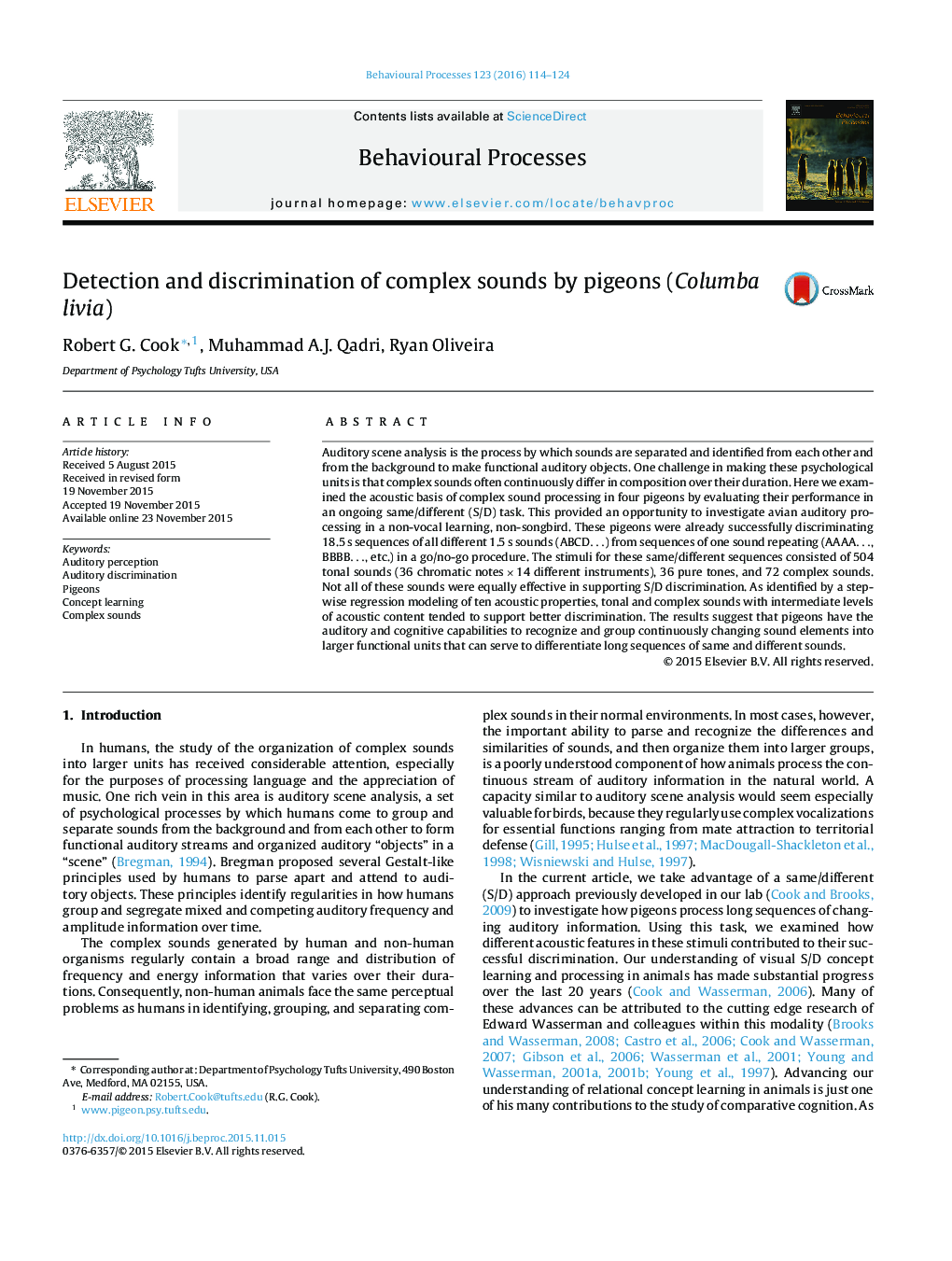| Article ID | Journal | Published Year | Pages | File Type |
|---|---|---|---|---|
| 2426423 | Behavioural Processes | 2016 | 11 Pages |
•Pigeons identified the repetition of successive complex sounds.•The type of acoustic content in sounds impacts the identification of repetition.•Pigeons show an ability to group complex sounds into larger perceptual units.
Auditory scene analysis is the process by which sounds are separated and identified from each other and from the background to make functional auditory objects. One challenge in making these psychological units is that complex sounds often continuously differ in composition over their duration. Here we examined the acoustic basis of complex sound processing in four pigeons by evaluating their performance in an ongoing same/different (S/D) task. This provided an opportunity to investigate avian auditory processing in a non-vocal learning, non-songbird. These pigeons were already successfully discriminating 18.5 s sequences of all different 1.5 s sounds (ABCD…) from sequences of one sound repeating (AAAA…, BBBB…, etc.) in a go/no-go procedure. The stimuli for these same/different sequences consisted of 504 tonal sounds (36 chromatic notes × 14 different instruments), 36 pure tones, and 72 complex sounds. Not all of these sounds were equally effective in supporting S/D discrimination. As identified by a stepwise regression modeling of ten acoustic properties, tonal and complex sounds with intermediate levels of acoustic content tended to support better discrimination. The results suggest that pigeons have the auditory and cognitive capabilities to recognize and group continuously changing sound elements into larger functional units that can serve to differentiate long sequences of same and different sounds.
